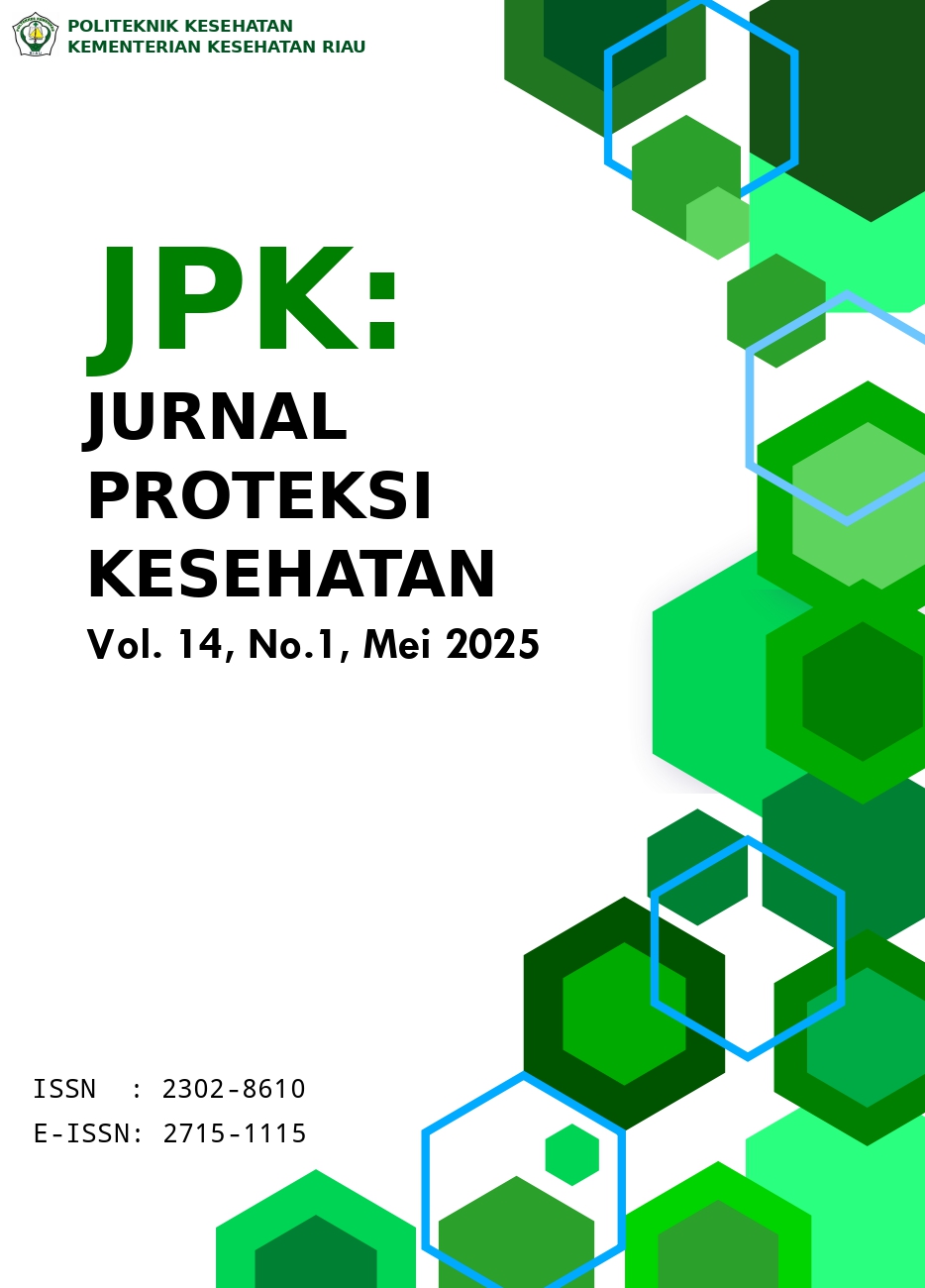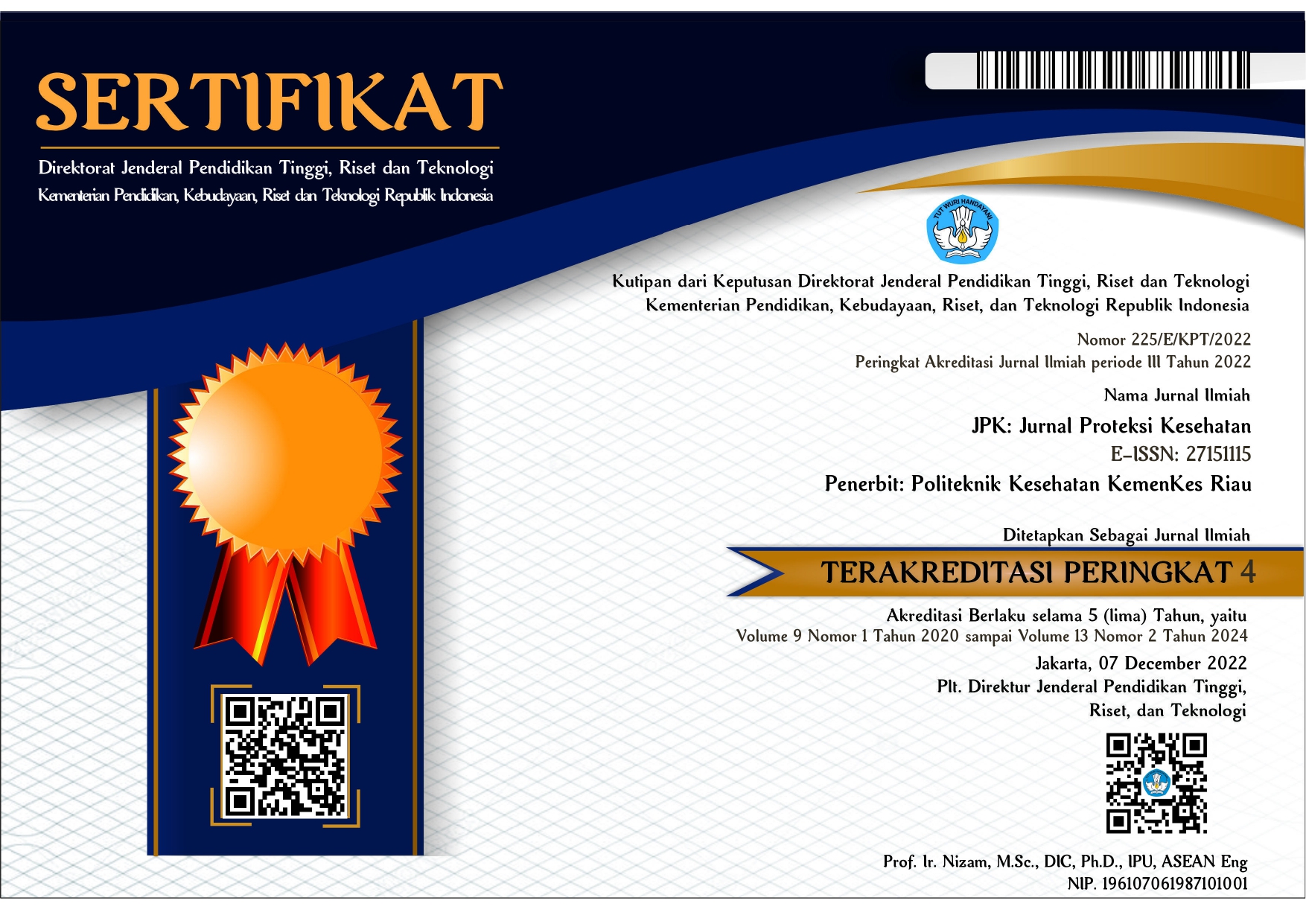The Influence of Prilension Stickers (Principles of Balanced and Safe Nutrition) on Students' Ability to Identify School Children's Snacks
Abstract
Introduction : Providing nutritional education about healthy foods during childhood not only prevents several causes of major disease and death, but can also reduce health costs and improve the quality of human life. Therefore, elementary school children need to receive education regarding school children's snacks. Researchers have developed nutrition education media in the form of Prilension Stickers (Principles of Balanced and Safe Nutrition) which contain short messages regarding the grouping of healthy snacks according to the principles of balanced nutrition. The objectives of the research is analyze the effect of education on students' ability to identify school children's snacks with the principles of balanced and safe nutrition. Method : This research method is a quasi-experimental pre-post test which analyzes students' ability to identify school children's snacks before and after being given education using Prilension Stickers. The research data consisted of 61 respondents who were students at SDN 2 Pekanbaru City, with a sampling technique using simple random sampling. The data analysis uses SPSS, The Wilcoxon Signed Rank test to evaluate paired samples (scores before and after education). Results : The test Wilcoxon signed rank results show that there is an effect of nutrition education on school children's snacks with Prilension Stickers on students' ability to identify school children's snacks with the principles of balanced and safe nutrition (Sig. < 0.005). Conclusion : It is important to provide nutritional education to increase knowledge in order to change school children's snacking habits and improve children's nutritional status.
References
[2] Kementerian Kesehatan Republik Indonesia, Riset Kesehatan Dasar 2018, Jakarta: Kemenkes RI, 2018.
[3] Sajiman, Nurhamidi, & Mahpolah, “Kajian Berbahaya Formalin, Boraks, Rhodamin B dan Metahlyn Yellow pada Pangan Jajanan Anak Sekolah di Banjarbaru”, Jurnal Skala Kesehatan, vol. 6, no. 1, pp. 1–5, 2015.
[4] Riyanto, A., & Abdillah, A. D, “Faktor yang Memengaruhi Kandungan E. coli Makanan Jajanan SD di Wilayah Cimahi Selatan”, Majalah Kedokteran Bandung, vol. 44, no. 2, pp. 77–82, 2012. https://doi.org/10.15395/mkb.v44n2.127
[5] Arti, N. A., & Suprianto, S, “Korelasi Faktor Pemicu Kebiasaan Jajan Anak SD Al Khairiyah di Kecamatan Sunggal Kabupaten Deli Serdang”, Jurnal Indah Sains dan Klinis, vol. 1, no. 1, pp. 6-11, 2020.
[6] Dahlan S, Mendiagnosis dan Menata Laksana 13 Penyakit Statistik: Disertai Aplikasi Program Stata, Jakarta: Sagung Seto, 2010.
[7] Keast, D. R., Nicklas, T. A., & O’Neil, C. E., “Snacking is associated with reduced risk of overweight and reduced abdominal obesity in adolescents: National Health and Nutrition Examination Survey (NHANES) 1999–2004”. The American journal of clinical nutrition, vol. 92, no. 2, pp. 428-435, 2010.
[8] Amira, K. A., & Setyaningtyas, S. W, “Pengaruh Edukasi Gizi Terhadap Pengetahuan dan Sikap Anak Sekolah Dasar dalam Pemilihan Jajanan Sehat: Literature Review”. Media Gizi Indonesia (National Nutrition Journal), vol. 16, no. 2, pp. 130-138, 2021.
[9] Kartini, T. D., Manjilala, M., & Yuniawati, S. E, “Pengaruh Penyuluhan Terhadap Pengetahuan Dan Praktik Gizi Seimbang Pada Anak Sekolah Dasar”, Media Gizi Pangan, vol. 26, no. 2, pp. 201, 2019. https://doi.org/10.32382/mgp.v26i2.1231
[10] Amalia, F., Nugraheni, S. A., & Kartini, A, “Pengaruh edukasi gizi terhadap pengetahuan dan praktik calon ibu dalam pencegahan kurang energi kronik ibu hamil (Studi pada Pengantin Baru Wanita di Wilayah Kerja Puskesmas Duren, Bandungan, Semarang)”, Jurnal kesehatan masyarakat, vol. 6, no. 5, pp. 370-377, 2018.
[11] Depkes RI, Peremenkes RI Nomor 1096/MENKES/PER/VI/2011 tentang Higiene Sanitasi Jasabogra. Jakarta: Depkes RI, 2011.
[12] Matondang, R. J. A., & Yuliaty, M, “Unhealthy Snacking Habits are Prevalent Among Elementary School Students”, Business Economic, Communication, and Social Sciences Journal (BECOSS), vol. 6, no. 1, pp.13-21, 2024.
[13] Febry, F, “Kebiasaan jajan pada anak”, Jurnal Ilmu Kesehatan Masyarakat, vol. 1, no. 2, 2010.
[14] Nuryani, N., & Rahmawati, R, “Kebiasaan jajan berhubungan dengan status gizi siswa anak sekolah di Kabupaten Gorontalo”, Jurnal Gizi Indonesia (The Indonesian Journal of Nutrition), vol. 6, no. 2, pp. 114-122, 2018.
[15] Erowati, D., Humaroh, Y., & Marlina, Y. Diari Gizi Remaja Putri, Ponorogo: Uwais Inspirasi Indonesia, 2022.
[16] Garcia, J, Impact of Nutrition Labeling on Food Choices and Diet Quality in France. Global Journal of Health Sciences, vol. 9, no. 3, pp. 32-44, 2024.
[17] Tandon PS, Zhou C, Chan NL, Lozano P, Couch SC, Glanz K, Krieger J, Saelens BE, “The impact of menu labeling on fast-food purchases for children and parents”, Am J Prev Med, 2011, Oct;41(4):434-8. doi: 10.1016/j.amepre.2011.06.033. PMID: 21961472; PMCID: PMC3185295.
[18] Sutarih, A., Sutrisno, E., & Rahayu, “D. Food Safety and its Regulation on School Snacks for Society's Health in Cirebon”, PROCEEDING 17th ADRI–UMMU 2018, 86. 2018.
[19] El Haque, I. T., Putra, S., Suparno, S., & Noor, A., “Ensuring the health and safety of indonesian school children: Legal protections in snack consumption”, Qubahan Academic Journal, vol. 3, no. 4, pp. 62-69, 2023.
[20] Chabibah, I. F. A., & Desiyanti, I. W., “Nutrition and Fun: It’s Time for Children to “Talk to Friends”(Wisely How to Choose Snacks Properly)”, In 3rd International Conference on Education for All (ICEDUALL 2023) (pp. 321-328). Atlantis Press, 2024












